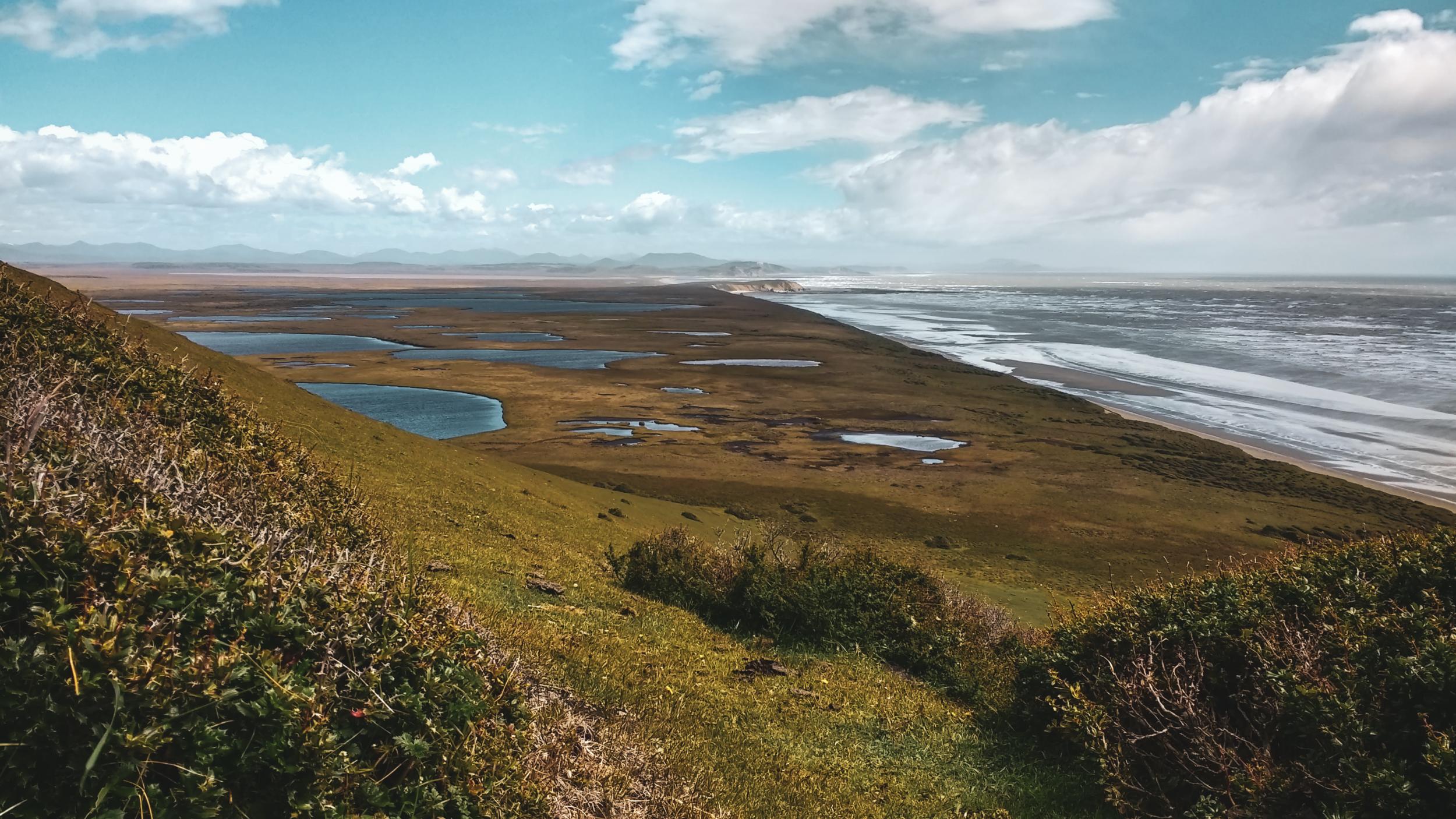
New protection for peatlands in the southern tip of Argentina
In December 2022 alongside the Global Biodiversity Framework negotiations, the Government of Argentina declared Peninsula Mitre in the Province of Tierra del Fuego, an area of mainly peatlands and somewhat larger than Luxembourg, a protected area.
Over 80 per cent of Argentina’s known peatlands are in Peninsula Mitre which also contains a representative sample of bogs, evergreen, highly humid Andean-Patagonian forest. Few people live here and there are no roads. Visitors include hikers, adventurers, ecologists, and bounty hunters seeking to salvage valuables from the many shipwrecks.
The new protected area also includes a marine area nearly twice the size of Luxembourg that includes the Isla de los Estados Provincial Reserve – emphasizing the connectivity of these valuable and unique ecosystems. By protecting the landscape, Argentina is enabling the conservation of kelp forests that harbour important biodiversity and, like peatlands, help mitigate climate change.
Achieving officially recognized protection for the area has been a more than 30-year struggle by civil society organizations including the Mane'kenk Association, representatives of indigenous communities, non-governmental organizations, and the Museum of the End of the World.
The United Nations Environment Programme (UNEP) sat down with Nancy Fernandez-Marchesi, a collaborator of the Global Peatlands Initiative and an Argentinian peatlands expert and ecologist who has studied the peninsula for many years, to ask her more about the province and the new law.
UNEP: Which indigenous groups still live in Peninsula Mitre?
Nancy Fernandez-Marchesi (NFM): Currently there are no indigenous people living in the area. The indigenous peoples who inhabited Peninsula Mitre were called Haush or Mane'kenk. The Haush were nomadic people who lived in tents made of guanaco (wild camelids, closely related to llamas) hides that could be easily dismantled and transported. They hunted mainly guanaco, sea lions and seabirds, and gathered shellfish and wild fruits. It is estimated that the Haush never exceeded 500 individuals, making them one of the smallest indigenous communities in South America. In the 19th century they came into contact with European explorers: firearms and foreign diseases had a devastating effect on them and today the Haush people no longer exist, though their culture and heritage have been preserved by anthropological and archaeological studies.
UNEP: How has the Global Peatlands Initiative, coordinated by UNEP, been of value in the long campaign for recognition of the need to protect Peninsula Mitre?
NFM: The Initiative has helped raise public awareness of the biodiversity and global heating mitigation value of peatlands. It’s of great value to countries and helps them recognize that they have peatlands and that they should preserve them.
UNEP: What threats does Peninsula Mitre face?
NFM: The threats are mainly linked to the absence of a management plan and state control. For example, vehicle access is not permitted but in the summer, we are seeing four-wheel drive vehicles taking tourists to the area, and they are damaging the peat bogs. Other threats include the large number of wild cattle that damage the soil and archaeological remains, and invasive species such as beavers or American mink.
UNEP: What difference will the December 2022 law make?
NFM: The new law allows the state to obtain funds for sustainable management of the peninsula, including the deployment of rangers and technology for improved oversight and control. The law also prohibits: surface or underwater military exercises that could have adverse impacts on local ecosystems; the use of weapons that leave chemical residues in the soil, air or water; noise pollution that might affect animals; extractive activity that generates irreversible impacts on ecosystems and landscapes or affects the area's conservation objectives; mining that affects the seabed and subsoil; the introduction of toxic or polluting substances that may disrupt or damage natural systems; and the introduction of exotic and invasive plant or animal species.
UNEP: How will the new law ensure that all stakeholders are consulted? How will its implementation be monitored?
NFM: The law creates a consultative commission that will take part in the peninsula’s management to reconcile all stakeholder interests. The commission, which will include academics and non-governmental organizations, will monitor the progress and results of the peninsula’s management plan and participate in the analysis of, and consultations on, any proposed projects. Commission members will also include one titular representative and one substitute representative of the legally constituted local communities of the province. While these communities now live in cities, they are striving to keep their culture, customs and links to the peninsula alive.
UNEP: The Venice Agreement signed on World Peatlands Day on 2 June 2022 stresses the importance of protecting global peatlands locally. How is this relevant to Peninsula Mitre when it has virtually no permanent residents?
NFM: The Venice Agreement is important because it allowed us to showcase Peninsula Mitre as a globally important peatland. Also, it allowed us from the far south to exchange experiences – cultural, educational, artistic, scientific – with friends of peatlands from all over the world. The Venice Agreement was the first time we participated in such an international event [the Venice Biennale at which the agreement was signed] with a far south focus, and it commits us to redouble our efforts to conserve the peatlands of Peninsula Mitre. The Agreement was reached in the same year that we managed to get the law passed, and I think it gave additional impetus to the local authorities to finally declare Peninsula Mitre a protected area.
UNEP: What would be your message to people in other countries struggling to promote laws for the protection of peatland ecosystems?
NFM: The fundamental message is “persevere and stick at it”. The processes of environmental protection are, unfortunately, slower than the processes of destruction, but we must not get discouraged. We must talk to people, work with other organizations, teach, generate networks, and raise public awareness. Conquests are collective, not those of individuals.
Photo credit: Abel Sberna.